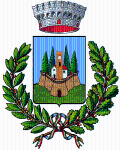Descrizione
Rilevata in una carta del 17 febbraio 1186, la Chiesa di Quercegrossa era dedicata a San Giovanni Evangelista. Essendo molto vicino al confine con Firenze il castello di Quercia Grossa che ospitava la chiesa fu attaccato e distrutto a più riprese, ragion per cui i senesi tentarono di irrobustirlo più volte. Nel 1343 la Signoria di Siena ordinava la riedificazione della Chiesa Parrocchiale.
c Una piccola curiosità: a lungo si è creduto che a Quercegrossa fosse nato il grande scultore Jacopo della Quercia (1374 ca. – 1438), notizia riportata nelle “Vite” del Vasari. A lui si devono importati opere come la Fonte Gaia di Siena e il sepolcro di Ilaria del Carretto a Lucca. In realtà il nonno di Jacopo, tale Angelo, pare avesse la madre (bisnonna di Jacopo) con gli occhi storti e per questo gli fu attribuito l’appellativo – come spesso usava – “della Guercia” che fu in seguito ingentilito e trasformato in “della Quercia”. E’ ormai appurato che Jacopo fosse nato infatti in città, a Siena.
English version:
Shown on a map from February 17, 1186, the church in Quercegrossa was then dedicated to San Giovanni Evangelista. Being quite close to the border of Florentine territory, the castle of Quercia Grossa that hosted the church was attacked and destroyed more than once, so the Sienese tried to fortify it further several times. In 1343 the Signoria (council of lords) of Siena ordered the rebuilding of the Parish Church.
The Church, now dedicated to Saints Giacomo and Niccolò, was restored after 1812. Inside, above the main altar, is a Lamentation over the dead Christ in multicolored terracotta, attributed to Francesco di Giorgio Martini who probably created it around 1480. An interesting fact: it was long believed that Quercegrossa was the birthplace of the great sculptor Jacopo della Quercia (1374 ca. – 1438), as indicated in Vasari's “Lives”. Della Quercia was responsible for important works like Siena's Fonte Gaia and Ilaria del Carretto's sepulcher in Lucca. But in reality, Jacopo's grandfather Angelo, apparently had a mother (Jacopo's great-grandmother) who was cross-eyed, and was thus given the name – as was typical of the period - “della Guercia” (guercia means one-eyed), which was later softened and became “della Quercia”. It is now known that Jacopo was actually born in the city of Siena.
Modalità d'accesso
Sempre aperto
Indirizzo
Punti di contatto
Ultimo aggiornamento: 14 settembre 2024, 15:06

